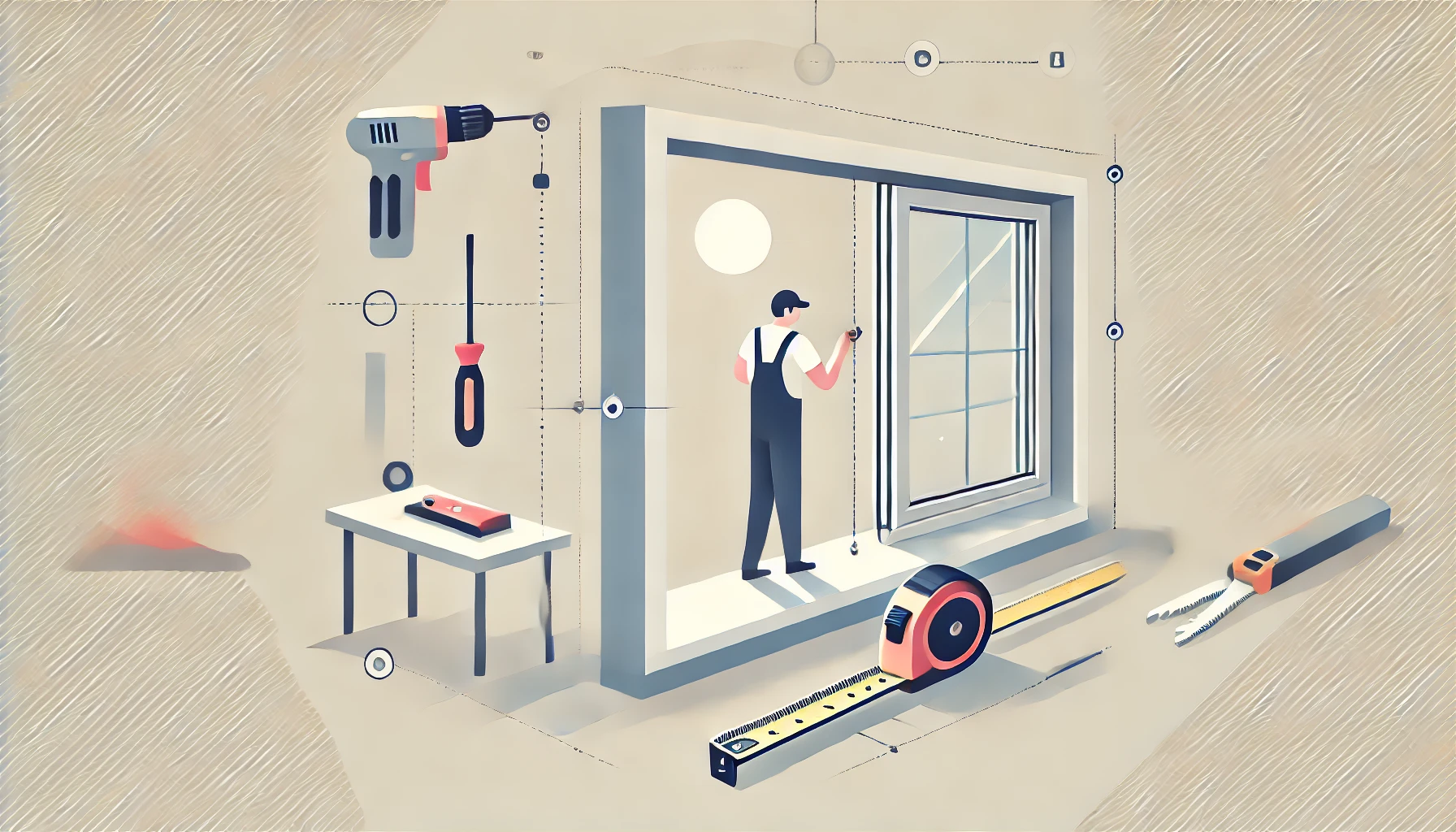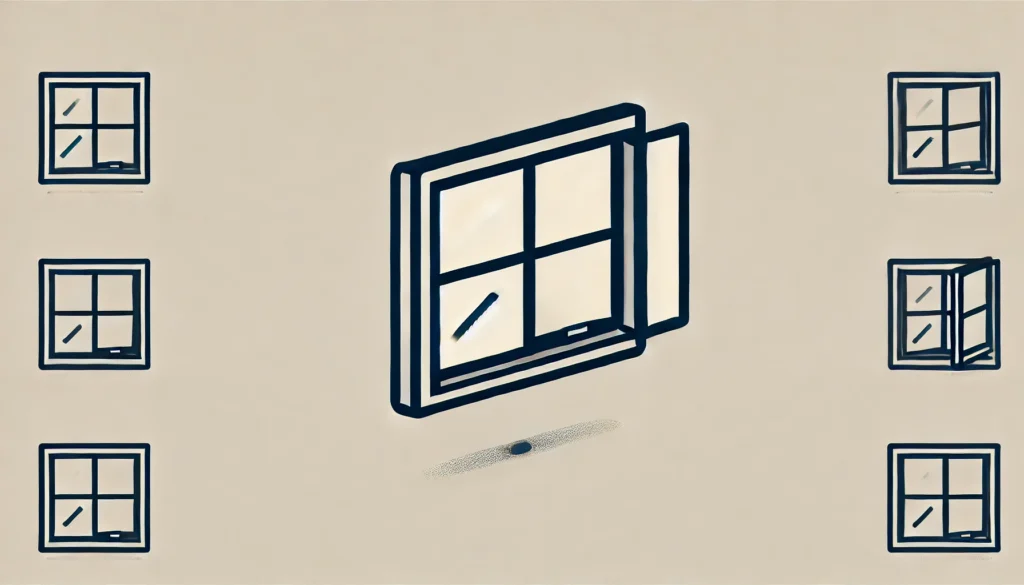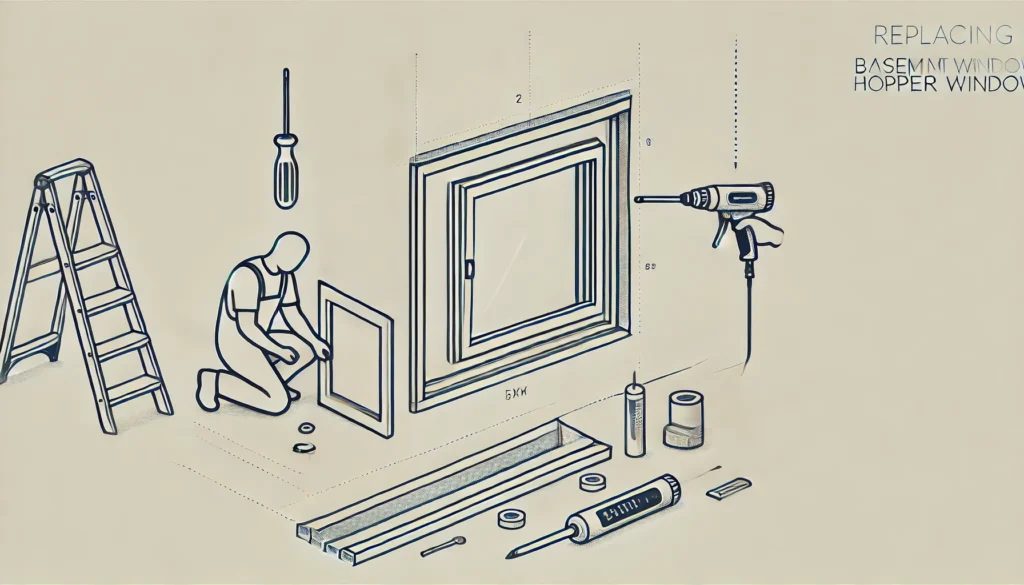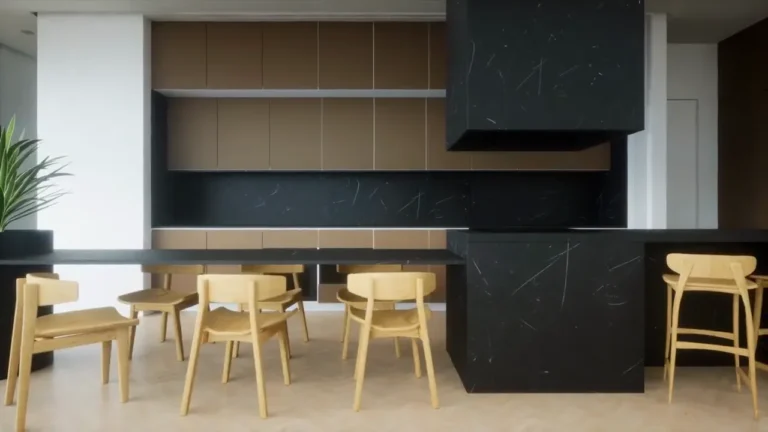How to Replace Basement Windows | A Complete Guide

Why and When to Replace Your Basement Windows
Your basement windows might be out of sight, but they shouldn’t be out of mind. They play a crucial role in insulation, security, and overall comfort. If you’re unsure whether it’s time for a replacement, this section will help you recognize the telltale signs that your windows are ready for an upgrade.
Signs It’s Time to Replace Your Basement Windows
Identifying the right time to replace your basement windows is essential for maintaining energy efficiency, safety, and overall home value. Here are some key signs to look for:
Drafts or Poor Insulation
Do you feel a chilly breeze even when the windows are closed? Drafty windows are a clear sign that your basement windows aren’t sealing properly. Not only does this make your basement less cozy, but it can also skyrocket your energy bills. Replacing old, inefficient windows with modern energy-efficient options can help keep your home snug and your wallet happy. Remember, a stitch in time saves nine!
Visible Damage or Rot
Windows that show cracks, warping, or signs of rotting wood are waving a red flag. These issues not only reduce the aesthetic appeal of your basement but can also compromise your home’s structural integrity. Rot and damage don’t heal over time—ignoring them is like kicking the can down the road. Replace damaged windows promptly to prevent bigger headaches later.
Difficulty in Operation
Are your windows a workout to open or close? Stiff or jammed windows often indicate wear and tear on the frame or mechanisms. Smooth operation isn’t just a convenience—it’s essential for safety, especially in case of emergencies. If your basement windows are more trouble than they’re worth, it’s time to bid them farewell.
Water Leakage or Mold Growth
Spotting water pooling around your windows or noticing mold growth nearby is a surefire sign of trouble. Water leakage can lead to costly damage to your basement’s walls and flooring, while mold poses serious health risks. If you notice these issues, it’s better to act sooner rather than later. After all, prevention is better than cure.
Choosing the Right Replacement Windows
When it comes to replacing basement windows, selecting the right type is crucial. The choice can significantly impact your basement’s energy efficiency, aesthetics, and functionality. Let’s explore the most common types of basement windows to help you make an informed decision.
Types of Basement Windows
Hopper Windows

Hopper windows are a popular choice for basements because of their compact design and excellent ventilation capabilities. These windows open inward from the top, creating an efficient seal against drafts when closed. Hopper windows are especially ideal for basements with limited space, as they don’t require additional room for opening. Their tight seal helps prevent water leakage and keeps your basement cozy, even during chilly months.
“A hopper window is like a loyal shield—compact, sturdy, and always protective.”
Slider Windows

Slider windows are another great option for basements. They slide horizontally along a track, making them easy to operate and clean. These windows are perfect if you’re looking for a larger opening to let in more natural light. Slider windows are known for their sleek, modern look, and they’re especially suited for basements with wide window openings.
“When you want to let the sunshine in without losing style, slider windows are a bright idea.”
Egress Windows
Egress windows are not just a functional addition; in many cases, they’re a legal requirement. Designed to provide a safe exit in case of emergencies, egress windows are larger and allow more light and ventilation into your basement. They’re essential for transforming your basement into a livable space, such as a bedroom or home office. If you’re wondering how to install basement egress windows, it’s worth consulting building codes and hiring a professional for installation.
“Egress windows are your basement’s gateway to safety and light.”
Glass Block Windows
Glass block windows are a stylish and secure choice for basements. These windows are made of thick glass blocks that provide excellent privacy while allowing natural light to filter through. They’re highly durable and energy-efficient, making them a smart option for areas prone to break-ins or harsh weather conditions. Replacing basement windows with glass blocks can be a game-changer if you prioritize both aesthetics and security.
“With glass block windows, your basement can sparkle with light while staying rock-solid secure.”
By understanding the features and benefits of these window types, you can select the perfect replacement for your basement. Whether you prioritize ventilation, natural light, security, or emergency access, there’s a window that fits the bill. The right choice isn’t just about functionality—it’s about giving your basement the facelift it deserves.
Factors to Consider When Choosing Basement Windows
Selecting the right replacement windows for your basement goes beyond just picking a style. It’s about balancing practicality, aesthetics, and compliance. Here are the key factors you should consider to make a decision that truly checks all the boxes.
Energy Efficiency
Energy-efficient windows can save you a fortune on heating and cooling bills while keeping your basement comfortable year-round. Look for windows with features like double or triple glazing, low-emissivity (Low-E) coatings, and insulated frames. These features minimize heat transfer, keeping your home warm in the winter and cool in the summer.
Durability and Materials
Basement windows must withstand exposure to moisture, temperature fluctuations, and potential wear and tear. Common materials include:
- Vinyl: Low-maintenance and affordable, but may not be as strong as other options.
- Aluminum: Lightweight and durable, but less energy-efficient.
- Fiberglass: Highly durable and energy-efficient but more expensive.
- Wood: Aesthetic and insulating but requires regular maintenance to prevent rot.
Choose a material that fits your budget and matches the conditions of your basement.
Aesthetic Appeal
Your basement windows should enhance the overall look of your home, inside and out. Consider the design, shape, and color of the windows to ensure they blend seamlessly with your home’s architecture. Glass block windows, for example, offer a modern touch, while slider windows provide a sleek, minimalistic vibe.
Local Building Codes and Egress Requirements
If you’re planning to install an egress window, ensure it complies with local building codes. These codes typically dictate the size, height from the floor, and clearance of egress windows to guarantee safe exit during emergencies. It’s essential to research these regulations or consult a professional to avoid costly mistakes.
Preparing for Basement Window Replacement
Proper preparation is the foundation for a successful basement window replacement. With the right tools, accurate measurements, and a focus on safety, you can make the process smooth and hassle-free. Let’s dive into the essentials.
Tools and Materials You’ll Need
Before starting, gather all the necessary tools and materials to avoid interruptions. Here’s a checklist:
- Tools:
- Measuring tape
- Pry bar
- Hammer
- Utility knife
- Screwdriver or power drill
- Reciprocating saw (for tough frames)
- Caulking gun
- Level
- Materials:
- Replacement window
- Shims
- Expanding foam or insulation
- Silicone caulk or weatherproof sealant
- Flashing tape
- Safety goggles and gloves
How to Measure for Replacement Basement Windows
Accurate measurements are crucial for ensuring a perfect fit for your new windows. Follow these steps:
- Measure the Width: Measure the distance between the side jambs at the top, middle, and bottom. Use the smallest measurement.
- Measure the Height: Measure from the top of the window opening to the sill at the left, center, and right. Again, use the smallest measurement.
- Depth Check: Ensure the depth of the window frame meets the requirements for the replacement window.
Note down all measurements, rounding down slightly to ensure the window fits snugly.
Safety Precautions and Preparation Tips
Replacing basement windows involves potential hazards, so safety should be a top priority:
- Wear Protective Gear: Use safety goggles to protect your eyes from debris and gloves to avoid cuts or splinters.
- Secure the Area: Remove obstacles around the workspace to prevent accidents.
- Check for Utility Lines: Ensure no gas or electrical lines are near the window area before cutting or drilling.
- Weather Watch: Pick a day with mild weather to avoid interruptions from rain or extreme temperatures.
- Remove Obstacles: Clear curtains, blinds, or anything obstructing the window area.
By following these precautions, you’ll not only work efficiently but also keep yourself safe.
Step-by-Step Guide to Replacing Basement Windows
Replacing basement windows may seem like a daunting task, but breaking it into manageable steps makes it achievable. Here’s a detailed guide to walk you through the process—from removing the old window to ensuring the new one fits perfectly and operates smoothly.
Removing the Old Basement Window
Removing an old basement window is the first step in preparing for a replacement. Follow these steps carefully to ensure safety and proper preparation:
How to Open and Remove Old Basement Windows
- Inspect the Window: Check how the old window is attached—some may be screwed in, caulked, or framed in place.
- Cut Seals and Fasteners: Use a utility knife or pry bar to carefully cut through caulk or adhesive around the frame.
- Remove Screws or Nails: Unscrew or pry out fasteners securing the window.
- Lift Out the Window: Gently remove the window, taking care not to damage surrounding areas. For stuck windows, use a pry bar to loosen them.
Dealing with Metal or Concrete Block Frames
- Metal Frames: Use a reciprocating saw to cut through metal sections, then pry them away carefully.
- Concrete or Cinder Block Frames: Chip away old mortar or concrete using a hammer and chisel. Avoid excessive force to prevent cracking the foundation.
Preparing the Window Opening
Cleaning and Leveling the Frame
- Remove Debris: Clean out old sealant, nails, or broken pieces from the frame.
- Level the Opening: Use a level to ensure the opening is even. If not, use shims or a grinder to adjust.
Addressing Rot, Cracks, or Uneven Surfaces
- Rotten Wood: Replace any rotten wooden parts with treated wood.
- Cracks: Fill cracks in concrete or wood with epoxy filler or mortar.
- Uneven Surfaces: Sand or plane the surface for a smooth, flat base.
Installing the New Window
Fitting the Replacement Window
- Dry Fit: Place the replacement window in the opening to ensure it fits.
- Adjust as Needed: Use shims to center and level the window.
Securing the Window in Place
- Attach the window frame using screws or anchors, depending on the material.
- Check alignment with a level before tightening all fasteners.
Applying Insulation and Sealant
- Use expanding foam or weatherproof insulation to fill gaps around the frame.
- Seal the edges with silicone caulk to ensure a watertight fit.
Installing Basement Windows in Concrete or Cinder Block Foundations
- Anchor Points: Drill holes into the concrete or cinder block to secure the window.
- Mortar or Foam: Fill gaps with mortar or foam for a firm, airtight seal.
Finishing Touches
Trimming and Painting
- Install trim around the window for a polished look.
- Paint or stain the trim and any exposed areas to protect them from moisture.
Checking for Proper Operation
- Open and close the window multiple times to ensure smooth operation.
- Verify that locks and latches function correctly.
By following this step-by-step guide, you can replace your basement windows efficiently and effectively. Whether dealing with concrete frames or applying final trims, each step contributes to a durable, energy-efficient, and visually appealing result.
How to Replace Basement Windows with Glass Blocks
Glass block windows offer privacy, security, and excellent insulation. Start by removing the old window and cleaning the opening. If you’re using individual blocks, stack them with mortar or use a pre-assembled panel. Place the blocks into the opening, ensuring they’re centered and level. Secure them with mortar around the edges and seal the perimeter with silicone caulk to prevent water from seeping in.
Replacing Basement Hopper Windows

Hopper windows are great for ventilation, especially in basements. To replace them, first, remove the old window and clean the area. Then, position the new window in the opening, ensuring its level and properly aligned. Secure the window with screws and seal the edges with silicone caulk to prevent drafts and moisture. Hopper windows are a space-saving choice that also provide easy ventilation.
Installing Egress Windows: Key Steps
Egress windows are essential for safety, providing a clear escape route in case of an emergency. Begin by checking local building codes to ensure compliance with size and height requirements. Cut the wall to create the opening, and clean the edges. Install the window frame, secure it with screws, and place the egress window into the opening. Finish by sealing the window and adding an egress well outside to allow for easy exit.
Troubleshooting Common Issues
Even with the best preparation, issues may arise during a basement window replacement. It’s important to recognize and address common problems such as uneven openings, water drainage issues, and poor window seals. Here’s how to troubleshoot and resolve these challenges effectively.
Dealing with Uneven Openings
Uneven openings are a common problem when replacing basement windows, and they can cause issues with the window fitting properly. To fix this, first check the opening for any discrepancies in level or width. Use a level to determine how uneven the surface is. If needed, you can trim the frame with a saw or use shims to adjust the alignment. This will help ensure a secure, tight fit for the replacement window, preventing drafts and air leaks.
Addressing Water Drainage Issues
Water drainage is a critical issue for basement windows, as improper drainage can lead to leaks and water damage. To address this and effectively get water out of the basement, ensure that the window sill is sloped slightly downward, allowing water to flow away from the window. Also, check the exterior drainage around the window, including gutters and downspouts, to ensure water is directed away from the foundation. Installing an egress well or adding a waterproof membrane around the window can also prevent moisture from entering the basement.
Fixing Poorly Sealed Windows
A poorly sealed window can lead to drafts, energy loss, and moisture problems. To fix this, start by checking the seal around the window frame. If the caulk or weatherstripping is worn or damaged, remove it and replace it with new, high-quality caulk or foam insulation. Make sure the new seal is applied evenly and completely to create an airtight barrier. Sealing the window properly will improve energy efficiency and prevent water infiltration.
Troubleshooting these common issues ensures that your basement window replacement lasts longer, performs better, and protects your home from the elements. Addressing problems like uneven openings, water drainage, and poor sealing will help you maintain a safe and efficient basement space.
Cost and Budget Considerations
When it comes to replacing basement windows, understanding the costs involved is essential for making informed decisions. Whether you plan to do the job yourself or hire a professional, knowing the factors that affect pricing can help you stay within budget. Additionally, if you’re considering waterproofing your basement, be sure to factor in the cost to waterproof a basement as part of your overall project expenses. Here’s a breakdown of cost considerations to guide you through the process.
How Much Does It Cost to Replace Basement Windows?
The cost to replace basement windows can vary widely depending on the type of window, material, and installation complexity. On average, replacing a single basement window can cost anywhere from $300 to $1,500, including the window itself and installation labor. Standard windows like hopper or slider windows tend to be on the lower end of the price spectrum, while specialty windows like egress or glass block windows can be significantly more expensive. Additional costs may include permits, especially for egress windows, and possible foundation repairs if there are structural issues.
DIY vs. Hiring a Professional: Pros and Cons
When deciding whether to replace basement windows yourself or hire a professional, it’s important to weigh the pros and cons. Doing the job yourself can save on labor costs, typically reducing the total price by 30-50%. However, DIY installation requires knowledge, tools, and time to get the job done correctly. Mistakes can lead to water damage or poor insulation, potentially costing more in repairs. Hiring a professional ensures the job is done right, especially for complex installations like egress windows, but professional services come with a higher price tag. On average, professional installation can add $150 to $300 per window.
Tips for Saving on Window Replacement Costs
There are several ways to reduce the overall cost of replacing basement windows without compromising quality. First, consider opting for standard window styles like hopper or slider windows, which are typically more affordable. You can also purchase windows directly from suppliers or home improvement stores to avoid markup from contractors.
Maintenance and Longevity Tips
Proper maintenance is key to ensuring that your basement windows last as long as possible and continue to perform well. Regular cleaning, seasonal care, and taking proactive steps to extend the lifespan of your windows can save you money in the long run and keep your basement comfortable. Here are some essential tips for maintaining your new basement windows.
Regular Cleaning and Inspection
To keep your basement windows in top condition, regular cleaning is essential. Dust, dirt, and grime can accumulate on the glass and window frames, affecting the appearance and performance. Clean your windows every few months using a mild detergent and a soft cloth. For the exterior, use a hose to remove debris from the window sills and surrounding area. During each cleaning session, inspect the seals and frames for cracks, leaks, or signs of wear. Early detection of issues can help prevent more serious problems down the road.
Seasonal Maintenance Tips
Basement windows are exposed to a variety of weather conditions throughout the year, making seasonal maintenance crucial. In the spring and fall, inspect the window seals and weatherstripping for any damage caused by temperature fluctuations. Reapply caulk or replace worn-out weatherstripping to ensure your windows remain airtight. In winter, clear any snow or ice that may accumulate around the window, as this can cause moisture buildup and freezing issues. In the summer, check the window frames for signs of warping caused by heat. Seasonal checks ensure your windows remain functional and energy-efficient year-round.
Extending the Lifespan of Your Basement Windows
To extend the lifespan of your basement windows, start by keeping the surrounding area well-maintained. Ensure that gutters and downspouts are clear of debris so water doesn’t pool around the window. Regularly inspect the window wells for drainage issues and remove any leaves or soil buildup. Also, consider applying a protective sealant to the window frames every few years to prevent moisture damage.
Conclusion
Replacing basement windows is a valuable investment in both the safety and comfort of your home. Whether you’re upgrading to energy-efficient models, adding egress windows for safety, or simply refreshing outdated designs, proper installation and maintenance are key to maximizing their lifespan and performance. By understanding the costs, installation processes, and common challenges, you can make informed decisions that suit your budget and needs.






